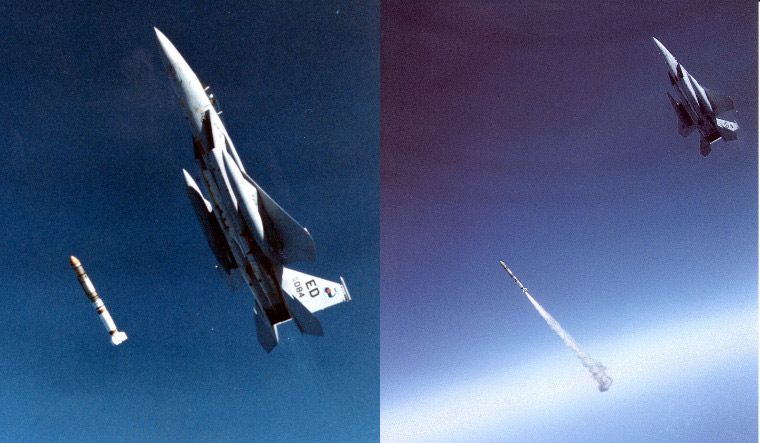Author: Zvedre, Y. K.
Published in National Security Journal, 09 July 2020
twice in 1984, once in 1985 and twice in 1986. In three cases MHV interceptors were launched not against real orbital or suporbital targets, but “directed at a star”, and in one further case the missile was “successfully tested” without the miniature kill vehicle.7
The first and only test against a space-borne target was performed in September 1985 against the decommissioned “Solwind” P78-1 spacecraft, that was destroyed at an altitude of 525 km.8 This test highlighted the adverse consequences of the ASAT system: the destroyed Solwind satellite generated several hundred pieces of space debris that could impact against and potentially destroy other space assets. The last piece of tracked debris from this test finally fell out of orbit in 2004.
In December 1985 the US Congress banned further testing of the ALMV system on satellites and in 1986 the ban on ASAT weapons tests was renewed. The Soviet Union continued to observe the voluntary moratorium on similar activities it had imposed at an earlier time. The following year the US agreed to extend the testing ban saying, however, that it would resume testing if Moscow did so. The Soviet Union, for its part, while honoring its testing moratorium, continued to pursue some missile defense and ASAT laboratory-based research. Reportedly, it was developing a similar ASAT weapon around this time, to be launched from a MiG-31 aircraft, but there is no evidence this project was pursued seriously.

A collage of the ASAT test by a US F-15 fighter in 1985. Source: Wikimedia Commons
